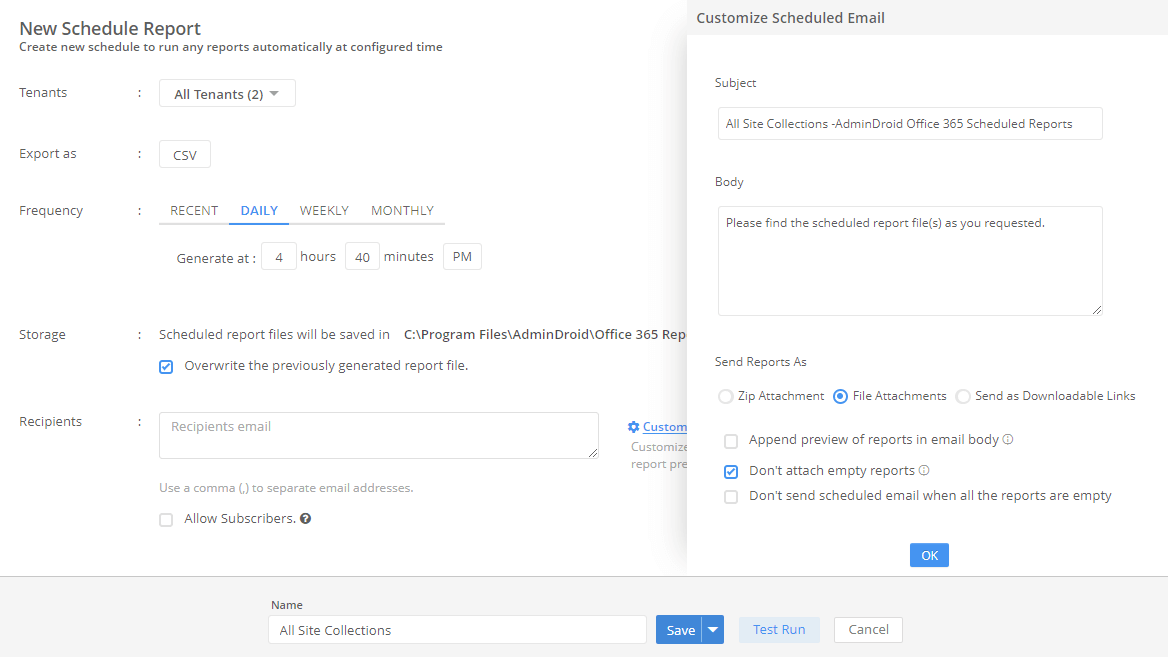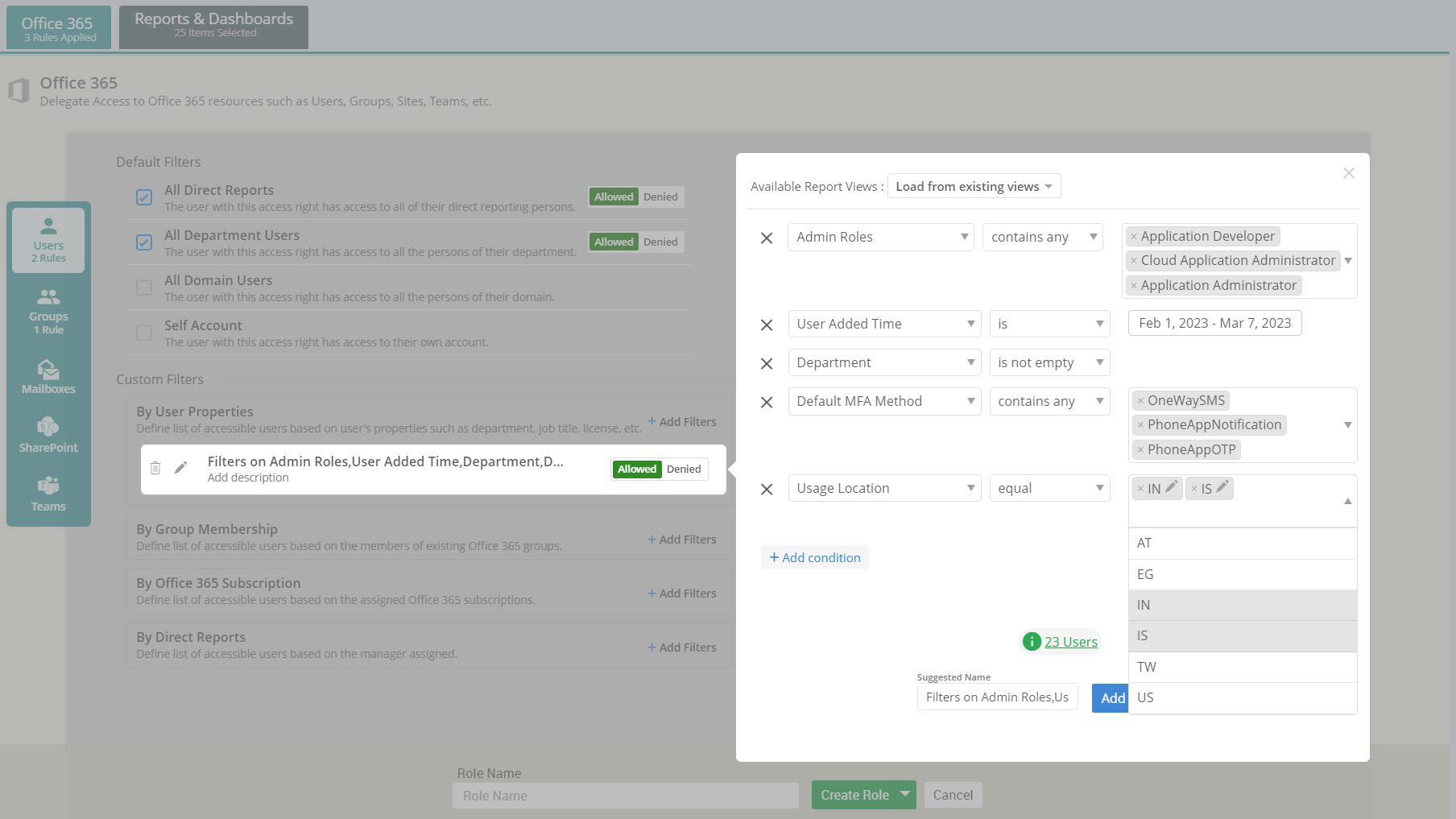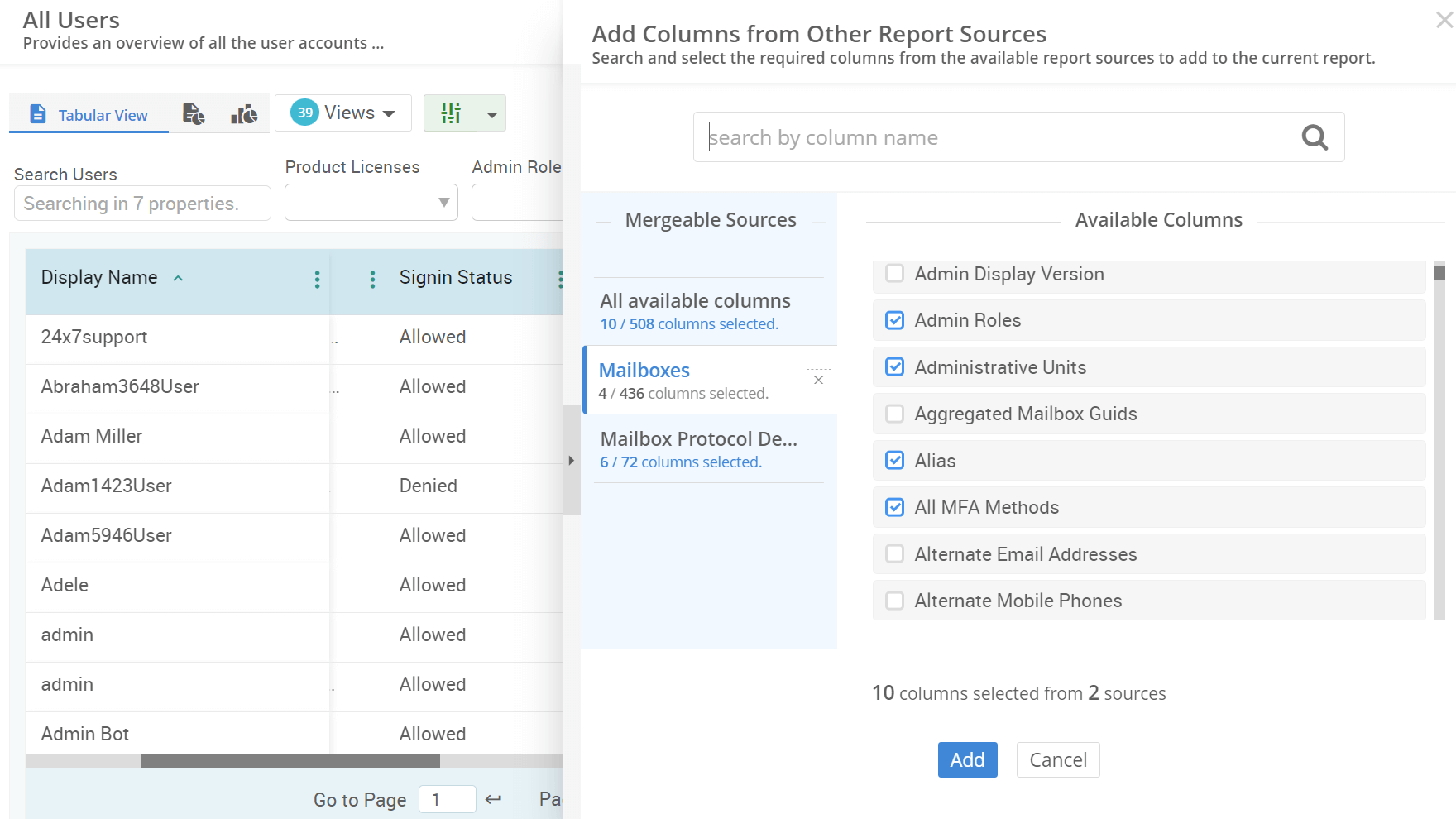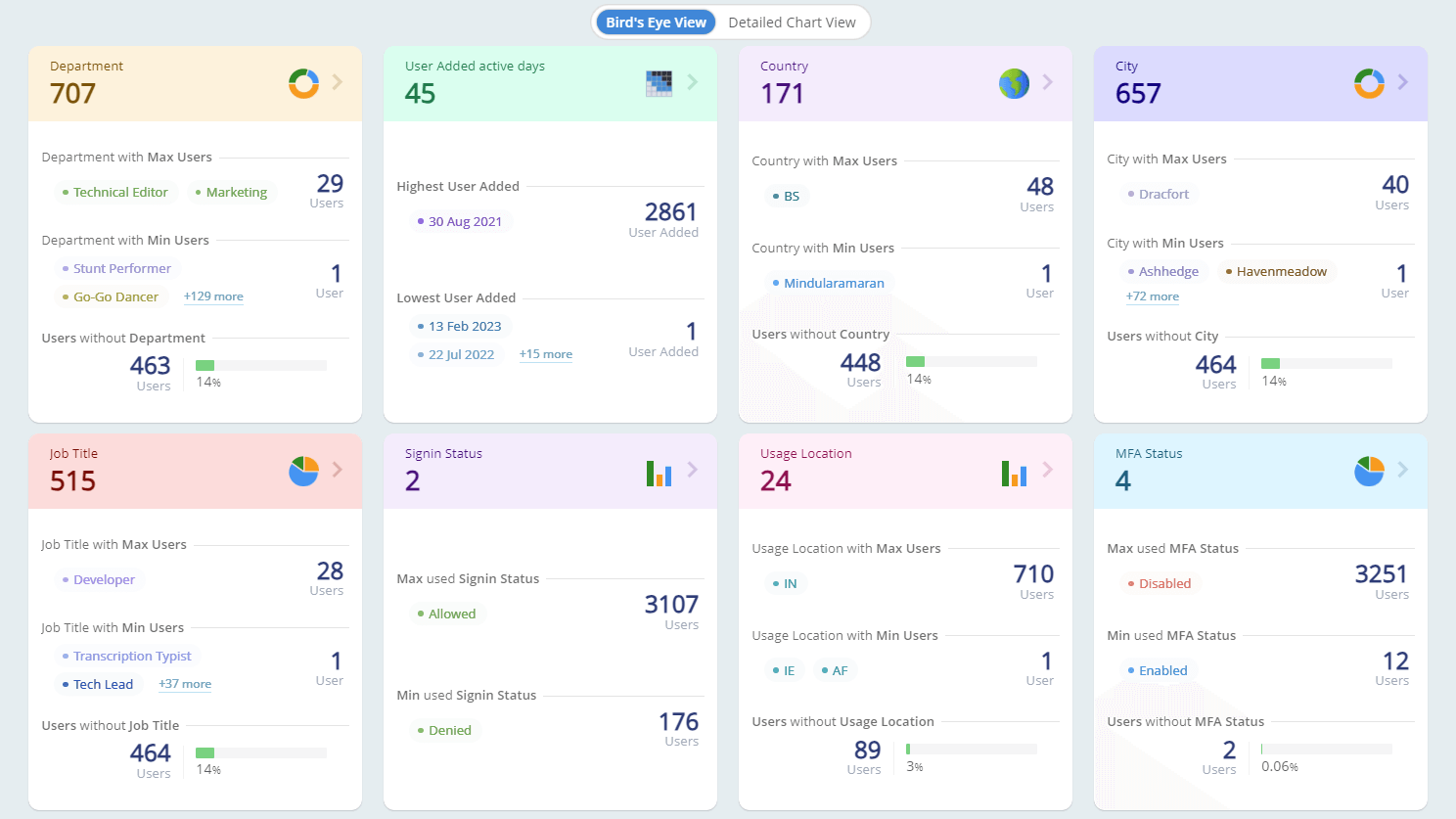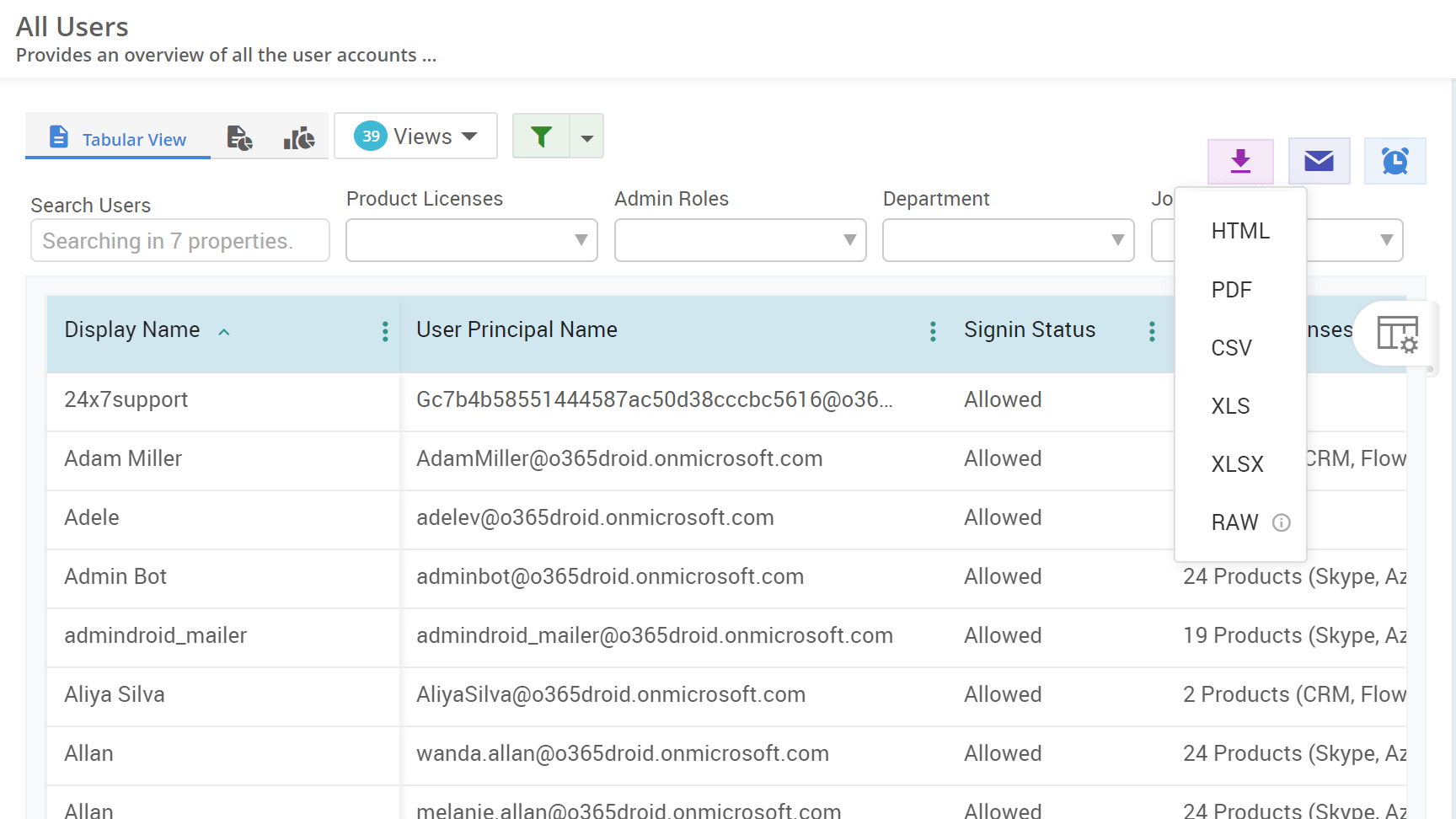External collaboration is essential for organizations, but allowing everyone to communicate with external domains can increase the risk of sensitive information leaks. Therefore, it's crucial to implement mail flow rules to block all users from sending emails outside the organization, except for specific groups.
To restrict users from sending emails to external domains, follow the steps below.
- Navigate to the Rules page in the Exchange admin center. Then, click Add a rule and select Create a new rule from the drop-down list.
- In the new rule creation page, specify a name for the rule. Under Apply this rule if section, select "The recipient" and choose "is external/internal". In the right pane, choose "Outside the organization" and click "Save."
- In the Do the following section, select "Block the message" and choose "reject the message and include an explanation". Provide a reason for the block, which users will see in the NDR message.
- You can also choose not to notify anyone and simply delete the message by selecting the delete the message without notifying anyone option.
- In the Except if section, select "The sender", choose "is a member of this group" and select the group you want to exempt from this rule.
Tip: To delegate more control, click the add condition (+) next to the first condition and select The sender. Here, you can specify a particular user or group to restrict only its members from sending emails outside the organization.
- Configure the rule settings as per the requirements and click "Next" to preview the specified conditions. Review and click Finish to complete the mail flow rule setup.
By default, the mail flow rule is disabled once created. To enable it, select the rule from the list and enable the toggle switch.
By implementing this rule, you ensure that only authorized groups can send emails outside the organization, while all other users are restricted. This approach helps maintain control over external communications and reduces the risk of data leaks.
Note: The rule changes may take up to 30 minutes to take effect.
Even minor changes to mail flow rules can cause significant email delivery issues, like redirecting sensitive data or blocking important emails. Therefore, every change to mail flow rules must be regularly monitored.
Monitor critical changes to transport rules with AdminDroid's Transport Rule Changes report!
The transport rule changes report offers detailed insights into changes made to mail flow rules in your organization. By reviewing this report, admins can track how email flow is being managed, ensuring better control over email policies and security.
- With AdminDroid’s alert functionality, you can easily receive notifications whenever changes to mail flow rules are made.
- You also have the flexibility to customize the alert message and the conditions that trigger the alert.









